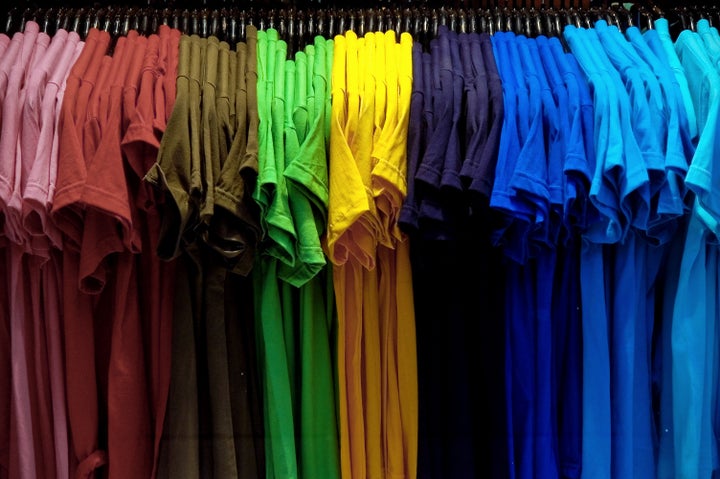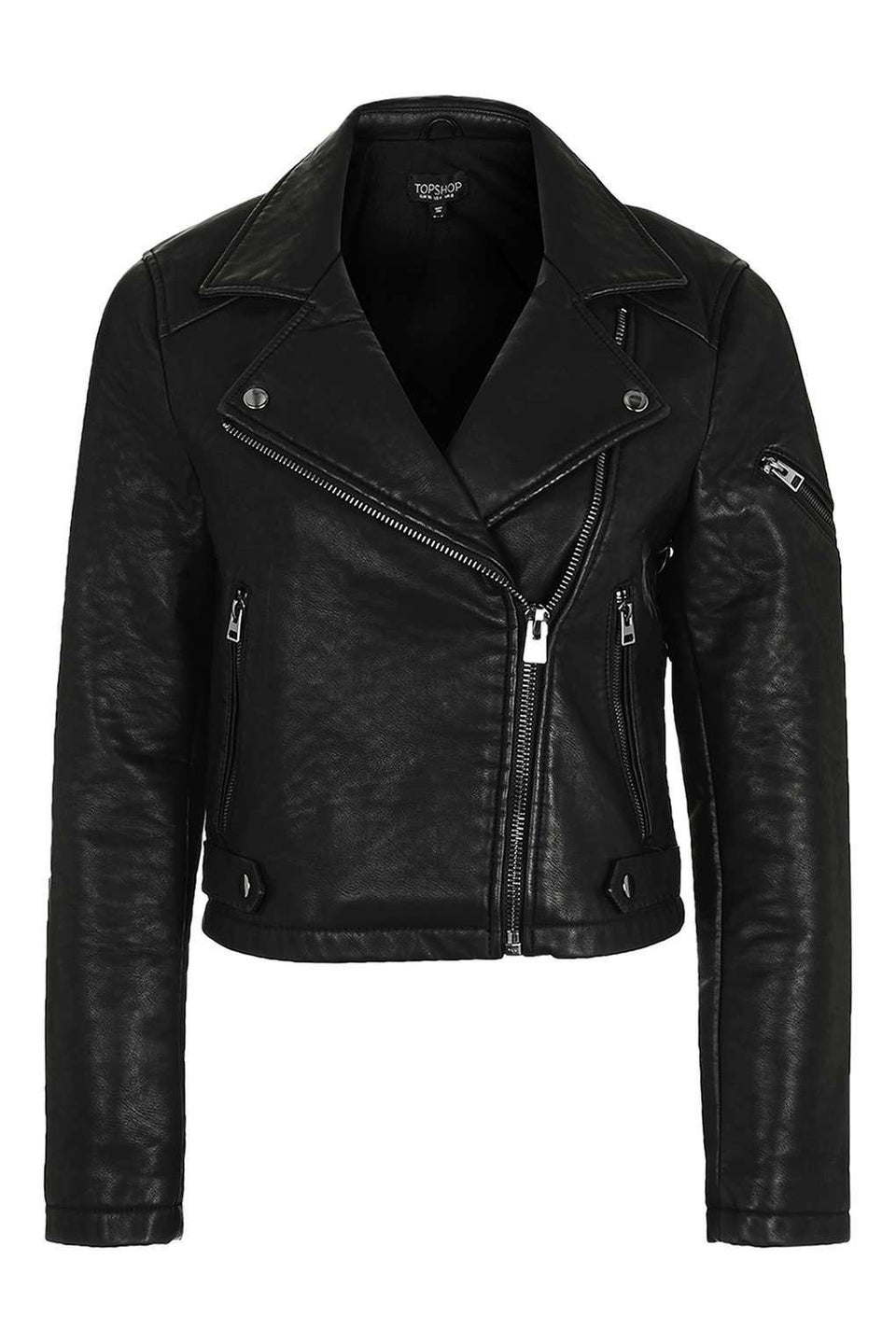
This article is part of HuffPost’s “Reclaim” campaign, an ongoing project spotlighting the world’s waste crisis and how we can begin to solve it.
Andrew Morgan never gave a second thought to the hidden cost of the clothes he bought well into adulthood.
The Los Angeles filmmaker and father of four made a habit of often shopping for cheap garments. When the items he bought wore out or fell apart after a year, he bought more. Morgan admits he simply didn’t take into account the possibility that his choices at the cash register might have unseen or unintended consequences.
“I very much grew up as a product of a modern world where I was taught to not think much about where the stuff that came into my life came from,” Morgan told The Huffington Post.
All that changed on the day he walked into a Starbucks store in Culver City, California, in 2013. As Morgan waited in line for his coffee, he glanced down at the newspaper rack. Eight thousand miles away in Bangladesh, a garment factory that produced clothes for Western brands had collapsed, killing more than 1,100 people. The photo on the cover of The New York Times showed two young boys, close in age to Morgan’s own sons, beside a wall plastered with missing persons signs.
“It did something to me instantly,” he said. “It was that chilling feeling where you realize you’ve been a part of something that you’ve never stopped to consider, and there are actually real people on the other end of it.”
Morgan had finished his latest film the day before the tragedy. He was on the lookout for a new project. Haunted by the image of the Rana Plaza building collapse, and appalled at his complicity in a system that had made it possible, he began contacting people around the world to learn more. He wanted to find out what was happening and to understand the stakes. Most of all, he wanted an answer to “why it was a story I had never been confronted with.”
Last year Morgan released “The True Cost,” a documentary about the fashion industry’s disastrous human and environmental consequences, including the staggering waste that results from an industry increasingly bent on producing cheap, low-quality, disposable clothes.

Fashion is a trillion-dollar global industry and the reasons for its wastefulness are varied and complex. But by any measure, the situation has reached crisis levels.
Each year, 80 billion pieces of clothing are bought around the world. Fifteen percent of fabric is wasted during the manufacturing process, before clothes even make their way to consumers. In the United States, where 97 percent of clothing sold is manufactured overseas, the average person throws away at least 60 pounds of clothing every year, according to the Environmental Protection Agency, though other estimates put this figure closer to 80 pounds. Eighty-five percent of that ends up in landfills, where chemically processed textiles can contaminate groundwater if not properly contained.
In June, HuffPost launched Reclaim, a campaign to raise awareness around America’s waste problem and highlight potential solutions, beginning with a focus on food waste. Now, we’re adding fashion waste to the mix. In the coming months, we’ll explore the issue from many angles. We’ll spotlight the efforts of upstart designers and established companies as they strive to improve their practices and reporting on what impact, if any, those efforts are having on the global fashion waste crisis. We’ll also share tips on how to reduce clothing waste in our own lives and open up the conversation using the hashtag #ReclaimFashion.”
Critics of the clothing industry’s wastefulness point to “fast fashion,” a retail method of constantly updating a store’s inventory. Fast fashion brands like H&M, Zara and Forever 21 are not only outpacing competitors, but also redefining fashion cycles, as more and more retailers aim to satisfy customers who expect an ever-replenishing selection of cheap, trendy clothes. Elizabeth L. Cline notes in her 2012 book Overdressed: The Shockingly High Cost of Cheap Fashion that new shipments arrive daily at Forever 21 and H&M, for example, and 400 new styles debut online every week at Topshop, the London-based retailer with more than 500 locations worldwide.
With so much cheap clothing available, so much more eventually gets thrown away. “The relationship between fast fashion and increasing textile waste is now unmistakable,” according to the International Journal of Consumer Studies.
Still, within the fashion industry, a certain amount of waste has long been accepted as the cost of doing business.
“There’s waste at every stage of the textile supply chain,” Sass Brown, interim dean of the Fashion Institute of Technology’s School of Art and Design in New York, told HuffPost. “And part of the problem is the textile supply chain is a very complex logistical nightmare.”
“We have these faster cycles, we have more disposable fashion. But we don’t have a sense of where all that is going.”
As food campaigns like farm-to-table and Slow Food gain traction, public awareness lags when it comes to the origins and consequences of what we wear, activists say. Sure, we know most of our clothes are no longer made in America. Even GOP presidential nominee Donald Trump gets it – sort of. But as Brown put it, “the average consumer has no idea” about the bigger picture: the chemicals in the fabrics we wear on our skin each day, the waste, the pollution, the lives of those actually making our clothes.
If clothing, like cigarettes, came with a warning label alerting us to these effects, Brown said, “I think we’d end fast fashion in an instant.”
Fashion is built on the idea of planned obsolescence. Much of what’s exciting about a piece of clothing being in style is knowing it may someday go out of style. But fast fashion’s critics say the breakneck speed of production and low prices have blinded us to the consequences of our purchases. The other side of the equation, as Morgan’s film shows, is an ugly mess of environmental damage, low-wage work and waste.
Tasha Lewis, an assistant professor of fashion design management at Cornell University, explained how fast fashion brings more clothes into our lives in a way that often leads to future waste.
“We have these faster cycles,” Lewis told HuffPost. “We have more disposable fashion. But we don’t have a sense of where all that is going. And a lot of consumers may tend to throw this clothing away because they don’t think anyone else would want to wear it. Because it just wasn’t made in the best way.”
The deadly Rana Plaza factory collapse, along with other similar tragedies in a short span, served as a wakeup call of sorts, for Morgan and countless others. To the delight and relief of activists who have worked for years to bring more attention to waste, injustice and abuse in the system, these issues are at last getting a more public airing.
In addition to “The True Cost,” which can be viewed on Netflix, there’s “Slowing Down Fast Fashion,” a documentary out later this year from the British musician Alex James. “It’s staggering how little most of us know about what our clothes are made from, where they come from or who made them,” James told WWD.
Fashion waste has found its way into the cultural conversation in other ways. A segment last year on “Last Week Tonight” with John Oliver took aim at fast fashion. “Saturday Night Live” has skewered H&M’s low prices and disposability. From Lena Dunham’s Lenny Letter to Anne Hathaway’s Instagram account, celebrities have shared tips for socially responsible shopping in a world ruled by fast fashion. Reformed shopaholics who once boasted of their extravagant “hauls” now preach conscious consumption inYouTube videos known as “haulternatives.”
More tangibly, businesses and designers are experimenting with take-back programs and other methods to give clothes a second life. Cities are introducing curbside textile recycling programs that take the time, effort and mystery out of donating used clothing.
Fast fashion companies themselves are taking steps to reduce waste, with varying degrees of commitment and success, activists say. H&M, for example, touts a range of sustainability efforts, from the waste reduction campaign World Recycle Week to an annual Conscious Exclusive collection that features eco-friendly pieces. “Our ambition is to have a circular approach in how our products are made and used, to utilize only recycled or other sustainably sourced materials and to implement only renewable energy in our value chain,” an H&M spokesperson told HuffPost. “To achieve this goal we know we need innovation.” The spokesperson cited the company’s annual award encouraging participants to reinvent the fashion industry and a recent pledge to develop new recycling technology. Forever 21 and Zara likewise outline their own sustainability policies, but they did not respond to requests for comment.
Cline, the author of Overdressed, told HuffPost she’s now at work on a documentary about clothing waste and other impacts of fast fashion. She also works in the secondhand clothing industry, which has deepened her understanding of America’s clothing waste problem. She is amazed by the number of clothes that are donated, and wonders where they can all possibly go. Meanwhile, fast fashion brands are churning out more, more, more ― “far in excess,” Cline says, “of what could ever be worn to the end of its useful life.”
But she sees at least one reason to be hopeful. The idea of fashion being more sustainable and thoughtful isn’t yet mainstream, she says. “But the conversation is at least happening now.”
More stories like this:
We Buy A Staggering Amount Of Clothing, And Most Of It Ends Up In Landfills
Now You Can Do Your Thrift Shopping Online, And It’s About Time
Dressing Like A Cartoon Character Made Me Happier, Calmer And A Better Consumer
This Company Is Basically A Hospital For Sad, Damaged Clothes
Why This Company Wants You To Fall In Love With People’s Old Jeans

